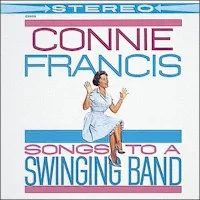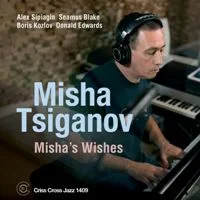Styles: Vocal Jazz
Year: 2013
File: MP3@320K/s
Time: 61:00
Size: 139,7 MB
Art: Front
(4:40) 1. Stuck in the Middle With You
(4:37) 2. So Good, So Right
(4:29) 3. Neither One of Us
(2:32) 4. Big Yellow Taxi
(4:33) 5. Waiting in Vain
(4:44) 6. Use Me
(4:46) 7. Fire and Rain
(4:03) 8. Love Don't Live Here Anymore
(7:29) 9. Spirit in the Dark
(5:16) 10. Sorry Seems to Be the Hardest Word
(3:53) 11. Home
(5:33) 12. Sweet Love
(4:19) 13. Landslide
Year: 2013
File: MP3@320K/s
Time: 61:00
Size: 139,7 MB
Art: Front
(4:40) 1. Stuck in the Middle With You
(4:37) 2. So Good, So Right
(4:29) 3. Neither One of Us
(2:32) 4. Big Yellow Taxi
(4:33) 5. Waiting in Vain
(4:44) 6. Use Me
(4:46) 7. Fire and Rain
(4:03) 8. Love Don't Live Here Anymore
(7:29) 9. Spirit in the Dark
(5:16) 10. Sorry Seems to Be the Hardest Word
(3:53) 11. Home
(5:33) 12. Sweet Love
(4:19) 13. Landslide
Most people who feel that they were born in the wrong time also believe that they would have fit better in some time in the past. I guess that’s because the past is a formed concept in our minds while the future is just an opaque notion. The past has already happened, and we can look back the attitudes, the clothes the culture and other aspects and say ‘I belong there.’ Of course, such beliefs by those of us who were not actually alive at that time require a degree of editing. In many ways the “good old days” were more old than good. Yes, it would have been great take in a show at Small’s Paradise in the 1920s, hanging out with the Harlem Renaissance artists and thinkers. However, that means that I would be a black man in America in the 1920s and we all know what a hassle that could be.
Still, an artist such as Nicole Henry can be forgiven if she feels like an analog girl in a digital world to quote a line from another artist who fits uncomfortably in the current epoch. Henry’s embrace of the music of the 1970s, as demonstrated on her live album So Good So Right, illustrates the ways that musical styles of the 1970s are more attuned to the gifts that Henry brings to the table. In many ways musical tastes have flipped 180-degrees from the musicianship, lyricism, soulful vocals and sophisticated glamour displayed by artists who strode across the 1970s musical stage.
Similar to singers such as Nancy Wilson, Henry brings a jazz sense of timing and phrasing to her vocals. That is heard in the swaying version of “Waiting in Vain” featured on So Good So Right (Henry fans might recall that she included a version of the Bob Marley classic on her studio album Embraceable). Like Aretha Franklin, Henry can speak a variety of musical languages, and this allows her to shift genres. Henry opens the live set with a funky version of the Stealers Wheel classic “Stuck in the Middle With You.” Henry’s treatment of the tune makes me curious of what she would do with my favorite Rafferty tune, “Baker Street.” She transforms Joni Mitchell’s folksy environmental anthem “Big Yellow Taxi” into a head bopping number that fuses blues and gospel.
While Henry showcases her ability to reimagine a number such as “Stuck in the Middle With You,” she plays it straight on her renditions of Brenda Russell’s “So Good So Right” and the Gladys Knight and the Pips classic, “Neither One of Us.” One aspect of crafting a successful live show lies in the artist’s understanding of when it is appropriate to get forward leaning on an arrangement and when to play it straight. Henry’s honest interpretation of these two classics captures the sense of contentment at the start of a relationship and the pathos of stark realization that is always in attendance at a relationships end.
Being a person who grew up listening to many of these tunes, I have always loved the music of the 1970s. I believe that the decade is underrated musically due largely to the great music made during the 1960s, but the 70s showed a particular strength in terms of musical variety musicianship, lyricism and the overall quality of performers. And while nothing can substitute for the originals, you don’t have to lower your expectations to enjoy listening to a master interpreter such as Henry rework these classics. Recommended. ~ Howard Dukes http://www.soultracks.com/nicole-henry-so-good-so-right-review
Still, an artist such as Nicole Henry can be forgiven if she feels like an analog girl in a digital world to quote a line from another artist who fits uncomfortably in the current epoch. Henry’s embrace of the music of the 1970s, as demonstrated on her live album So Good So Right, illustrates the ways that musical styles of the 1970s are more attuned to the gifts that Henry brings to the table. In many ways musical tastes have flipped 180-degrees from the musicianship, lyricism, soulful vocals and sophisticated glamour displayed by artists who strode across the 1970s musical stage.
Similar to singers such as Nancy Wilson, Henry brings a jazz sense of timing and phrasing to her vocals. That is heard in the swaying version of “Waiting in Vain” featured on So Good So Right (Henry fans might recall that she included a version of the Bob Marley classic on her studio album Embraceable). Like Aretha Franklin, Henry can speak a variety of musical languages, and this allows her to shift genres. Henry opens the live set with a funky version of the Stealers Wheel classic “Stuck in the Middle With You.” Henry’s treatment of the tune makes me curious of what she would do with my favorite Rafferty tune, “Baker Street.” She transforms Joni Mitchell’s folksy environmental anthem “Big Yellow Taxi” into a head bopping number that fuses blues and gospel.
While Henry showcases her ability to reimagine a number such as “Stuck in the Middle With You,” she plays it straight on her renditions of Brenda Russell’s “So Good So Right” and the Gladys Knight and the Pips classic, “Neither One of Us.” One aspect of crafting a successful live show lies in the artist’s understanding of when it is appropriate to get forward leaning on an arrangement and when to play it straight. Henry’s honest interpretation of these two classics captures the sense of contentment at the start of a relationship and the pathos of stark realization that is always in attendance at a relationships end.
Being a person who grew up listening to many of these tunes, I have always loved the music of the 1970s. I believe that the decade is underrated musically due largely to the great music made during the 1960s, but the 70s showed a particular strength in terms of musical variety musicianship, lyricism and the overall quality of performers. And while nothing can substitute for the originals, you don’t have to lower your expectations to enjoy listening to a master interpreter such as Henry rework these classics. Recommended. ~ Howard Dukes http://www.soultracks.com/nicole-henry-so-good-so-right-review
So Good, So Right: Nicole Henry LIVE




















